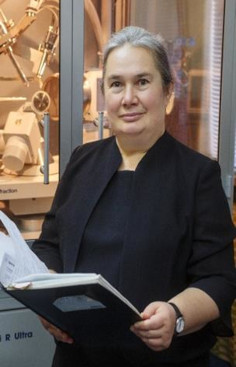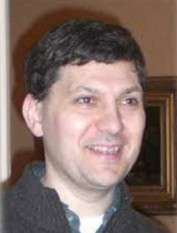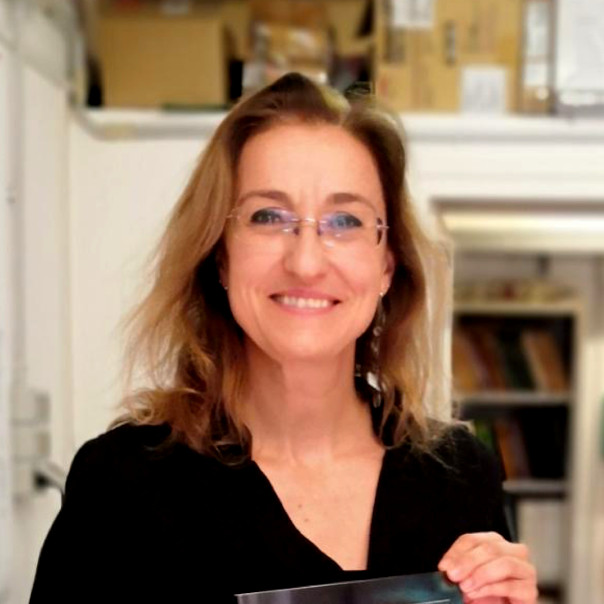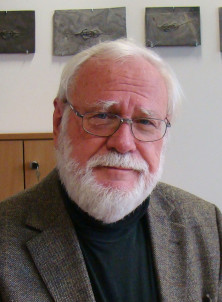|
|
|
Outlines
Pr Dr Elena Boldyreva, Novosibirsk State University, Russia High-pressure diffraction studies can provide valuable information on various intermolecular interactions in crystals, in particular, on their relative importance for the formation of crystal structures and the response of a crystal structure to external (hydrostatic) and internal (chemical) pressure. Different types of interactions may be important in different pressure ranges. The following topics will be discussed:
__________________________________
R. Pollice, M. Bot, V. Gorbachev, A. Tsybizova, L. Fritsche, L. Miloglyadova, Raphael Bissig, Raphael Oeschger, and Prof Dr Peter Chen, Laboratorium für Organische Chemie, ETH Zürich
For large molecules, meaning systems with up to 200 atoms, London dispersion effects on bond strengths and intra- or intermolecular interactions can reach tens of kcal/mol. We report multiple experimental systems with multiple physical techniques that stress-test the computational workflow for large molecules. The methods range from "Second Law" measurements, which essentially measure rates, to "Third Law" measurements, which measure equilibria, all in the gas phase (although there is accompanying work in solution) to be directly comparable to electronic structure calculations without intervening solvent models which themselves can become problematic.
Pr Dr Jorge Echeverria Lopez, University of Zaragoza, Spain.
We show here how the nucleophilic or electrophilic character of ubiquitous methyl groups can be modulated by specific substitution. When a methyl group is directly bound to an electronegative atom the electron density is attracted by the later and the electron-deficient carbon atom can behave as a Lewis acid giving place to the so-called tetrel bonding. On the other hand, if the methyl group is bound to an electropositive atom (e.g. Al) the carbon atom becomes electron-rich and can act as a Lewis base in many different types of known noncovalent interactions. This intriguing behavior has been recently reported in hydrogen bonds,[1] s- and π-hole interactions,[2] short methyl-alkali metal contacts in aluminates,[3] and also in reciprocal methyl···methyl interactions.[4] _________________________________ [1] O. Loveday, J. Echeverría; Cryst. Growth Des., 2021, 21, 5961. [2] O. Loveday, J. Echeverría; Nature Commun., 2021, 12, 5030. [3] J. Damián, C. Rentero, J. Echeverría, M.E.G. Mosquera; Faraday Discuss., 2023 DOI: 10.1039/D2FD00144F [4] N. Keshtkar, O. Loveday, V. Polo, J. Echeverría; Cryst. Growth Des., 2023, 23, 5112.
Pr. Dr Eric Hénon, Université de Reims, France
The Independent Gradient Model (IGM) is a relatively recent electron density-based approach, which has its roots in the Noncovalent Interaction (NCI) approach pioneered by W. Yang.[1] Building upon the foundations of NCI, the IGM offers a novel perspective in the study of non-covalent interactions by utilizing the electron density gradient to identify and quantify these interactions through the concept of ED contragradience.[2] The IGM approach introduces unique local descriptors and methodologies, which provide a new framework for quantifying and deepening the understanding of interactions over a broad range, spanning from strong covalent bonds to subtle weak interactions, through metal coordination.[3],[4] It offers atomic-level information[5],[6] and provides chemists with a visual understanding of the interactions present in chemical systems.[7] This computational tool[8]has potential applications in the interpretation of chemical reaction mechanisms and in exploring the realm of host-guest chemistry. [1] E. R. Johnson, S. Keinan, P. Mori-Sanchez, J. Contreras-Garcia, Julia and A. J. Cohen and W. Yang, J. Am. Chem. Soc. 132 (2010) 6498. [2] C. Lefebvre, Corentin, G. Rubez, H. Khartabil, J.-C. Boisson, J. Contreras-Garcia and E. Hénon, Phys. Chem. Chem. Phys. 19 (2017) 17928. [3] C. Lefebvre, H. Khartabil, J.-C. Boisson, J. Contreras-Garcia, J.-P. Piquemal and E. Hénon, Chem. Phys. Chem. 19 (2018) 724. [4] J. Klein, H. Khartabil, J.-C. Boisson, J. Contreras-Garcia, J.-P. Piquemal and E. Hénon, J. Phys. Chem. A 124 (2020) 1850. [5] M. Ponce-Vargas, C. Lefebvre, J.-C. Boisson and E. Hénon, J. Chem. Inf. Model. 60 (2020) 268. [6] C. Lefebvre, H. Khartabil and E. Hénon, Phys. Chem. Chem. Phys. 25 (2023) 11398. [7] R. Weiss, Y. Cornaton, H. Khartabil, L. Groslambert, E. Hénon, P. Pale, J.-P. Djukic and V. Mamane, ChemPlusChem 87 (2022) e202100518. [8] C. Lefebvre, J. Klein, H. Khartabil, J.-C. Boisson and E. Hénon, J. Comp. Chem. (2023), just accepted https://doi.org/10.1002/jcc.27123
 The properties of ionic liquids rely on a delicate balance of Coulomb interactions, hydrogen bonds and dispersion forces. Separating and quantifying these interaction contributions in such complex liquids remains a challenge. We show that specific protic ionic liquids, far-infrared spectra, evaporation enthalpies as well as DFT calculations allow the analysis of the non-covalent interaction energies and a quantification of the differently localized, strong and directional interaction contributions in ionic liquids.[1-7] Special attention we pay to the competition between hydrogen bonds and dispersion interactions and the role of both types of interactions in the case of repulsive or attractive Coulomb interaction between ions of like or opposite charge.[5,8] __________________________________ [1] K. Fumino, E. Reichert, K. Wittler, R. Hempelmann, R. Ludwig, Angew. Chem. Int. Ed. 2012, 51, 6236.
[2] K. Fumino, V. Fossog, K. Wittler, R. Hempelmann, R. Ludwig, Angew. Chem. Int. Ed. 2013, 52, 2368.
[3] K. Fumino, S. Reimann, R. Ludwig, Phys. Chem. Chem. Phys. 2014, 16, 21903.
[4] R. Ludwig, Phys. Chem. Chem. Phys. 2015, 17, 13790.
[5] K. Fumino, V. Fossog, P. Stange, D. Paschek, R. Hempelmann, R. Ludwig, Angew. Chem. Int. Ed. 2015, 54, 2792.
[6] D. H. Zaitsau, V. N. Emel'yanenko, P. Stange, C. Schick, S. P. Verevkin, R. Ludwig, Angew. Chem. Int. Ed. 2016, 55, 11682.
[7] D. H. Zaitsau, V. N. Emel'yanenko, P. Stange, S. P. Verevkin, R. Ludwig, Angew. Chem. Int. Ed. 2019, 58, 8589.
[8] T. Niemann, D. H. Zaitsau, A. Strate, P. Stange, R. Ludwig, Phys. Chem. Chem. Phys. 2020, 22, 2763.
Pr. Dr Cristina Puzzarini, University of Bologna, Italy Non-covalent interactions play a key role in many different aspects of chemistry, ranging from biological and technological processes to astrochemistry. The topics that will be touch is this contribution are:
__________________________________
Prof. Dr. Hans-Jörg Schneider FR Organische Chemie der Universität des Saarlandes, Saarbrücken, Germany
The distinction between dispersive and classical or nonclassical hydrophobic interactions based on entropic or enthalpic driving forces is problematic in view of the temperature dependence of these parameters,[i] and similar contributions of TDS and DH, or also heat capacity and solvent effects.[ii] Measurements of supramolecular porphyrin complexes in water open the possibility to elucidate experimentally the contributions of these prominent van der Waals interactions.[iii] Unexpectedly, even most hydrophobic solutes such as alkanes do not associate at all with the flat porphyrin surface, which indicates that classical hydrophobic interactions at least do not exist between molecules. Enthalpically driven hydrophobic interactions between molecules occur, in line with MD simulations,[iv] only at concave sites, where the replacement of disordered water molecules with hydrogen bond deficiency by a guest molecule leads to sizeable associations depending on the number of such water molecules.[v] The absence of hydrophobic interactions in the porphyrin complexes allows, for the first time, to derive increments of dispersion free energy in water for numerous groups, [vi],[vii] including peptides,[viii]etc. These increments are additive, as shown with 50 different complexes. The results have implications for understanding van der Waals interactions in and with biopolymers such as proteins or nucleic acids, where the availability of many polarizable groups makes dispersive interactions more likely than usually assumed hydrophobic interactions. Porphyrin complexes can be useful for evaluating dispersive interactions with bioactive compounds such as drugs. [i] DOI 10.1016/j.chphi.2022.100104 [ii] DOI 10.1021/acs.chemrev.5b00583[iii] DOI 10.1021/jo00103a046[iv] DOI 10.1021/ct1003077[v] DOI 10.1002/anie.201310958 DOI 10.1002/anie.199114171[vi] DOI 10.1002/1521-3773(20020415)41:8<1368::AID-ANIE1368>3.0.CO;2-N[vii] DOI 10.1021/acs.accounts.5b00111[viii] DOI 10.1002/1521-3765(20020301)8:5<1181::AID-CHEM1181>3.0.CO;2-U
Pr Dr Alexander Tkatchenko, University of Luxemburg, Luxemburg
Noncovalent van der Waals (vdW) interactions are known to be quantum mechanical (QM), many-body (MB) and long range (LR) in nature [1,2,3]; despite this fact practical models often neglect these well-known properties of vdW interactions [4]. I will summarize our development of explicit QM/MB/LR approaches for vdW interactions based on swarms of coupled quantum Drude oscillators (QDOs) [5]. I will demonstrate the efficiency, accuracy, scalability, and transferability of QDO models for a wide range of chemical, biological, and condensed matter systems at nano, meso, and macroscopic scales. Furthermore, novel insights into vdW interactions in complex molecules will be demonstrated by analyzing spatial and temporal properties of coupled QDOs.
_______________________________
[1] https://doi.org/10.1021/acs.chemrev.6b00446 [2] https://doi.org/10.1126/science.aae0509 [3] https://doi.org/10.1038/ncomms3341 [4] https://doi.org/10.1039/C9CS00060G [5] https://doi.org/10.1021/acs.jpclett.3c01221
|









